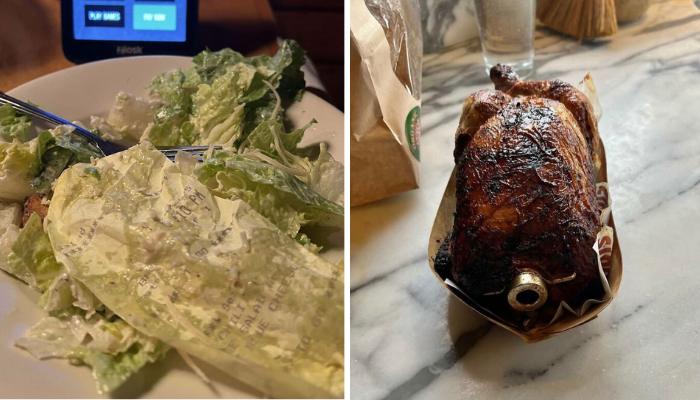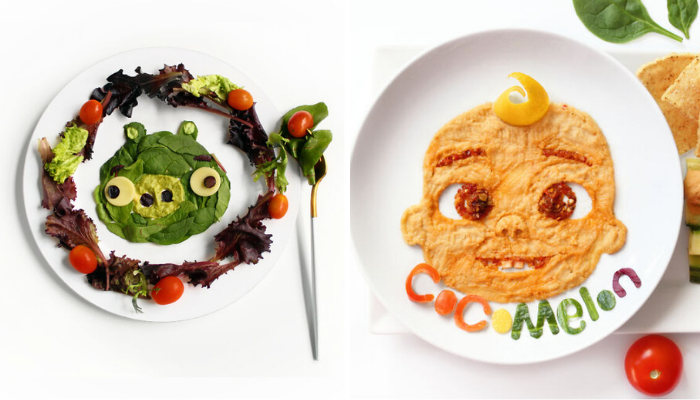30 Disgusting Food Fails That Totally Ruined People’s Appetites (New Pics)
When you tell the chef “Surprise me” at a fancy restaurant, you’re usually hoping for something amazing—a secret ingredient, creative plating, maybe even an unforgettable dining experience.
What nobody expects is a nightmare on a plate: a rusty screw, a bug, a slug, or even a piece of plastic hiding in your food. But sadly, that’s exactly what some unlucky diners got, and it completely killed their appetite.
Advertisement – Continue Reading Below
These kinds of shocking restaurant food fails aren’t just bad luck—they’re signs of poor hygiene and careless food prep. And honestly, they’re the kind of thing that could land a place with terrible restaurant health inspections or bad food safety ratings.
So if you’re scrolling while eating, maybe stop now. Some of these photos are so gross they might make you rethink your next meal.
And remember this: the next time you’re about to order from a low-rated restaurant at 2 A.M., think twice. Your late-night craving for cheap takeout might come with an extra topping you never asked for.
#1 Found A Fake Nail In My Yiros
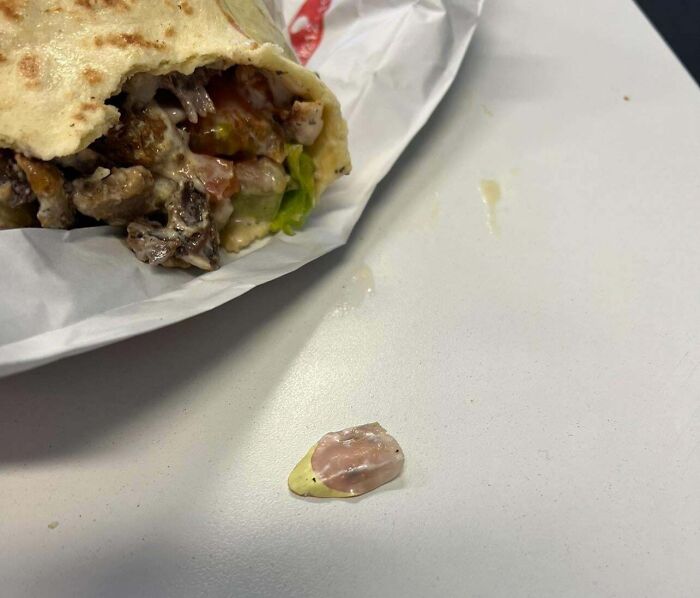
Advertisement – Continue Reading Below
#2 Why Is There A Screw In One Of My Fries?
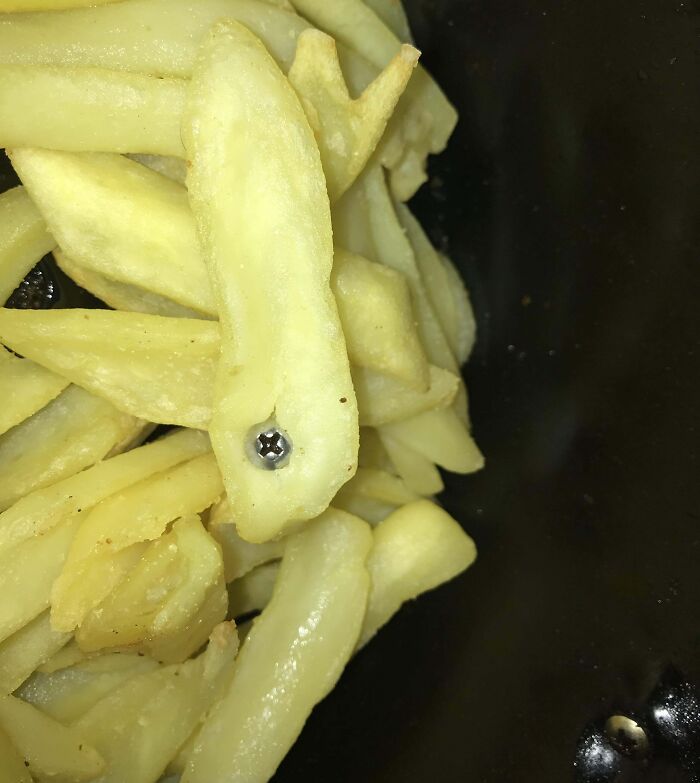
Advertisement – Continue Reading Below
#3 Someone Did Not Close The Rice Cooker Lid Properly
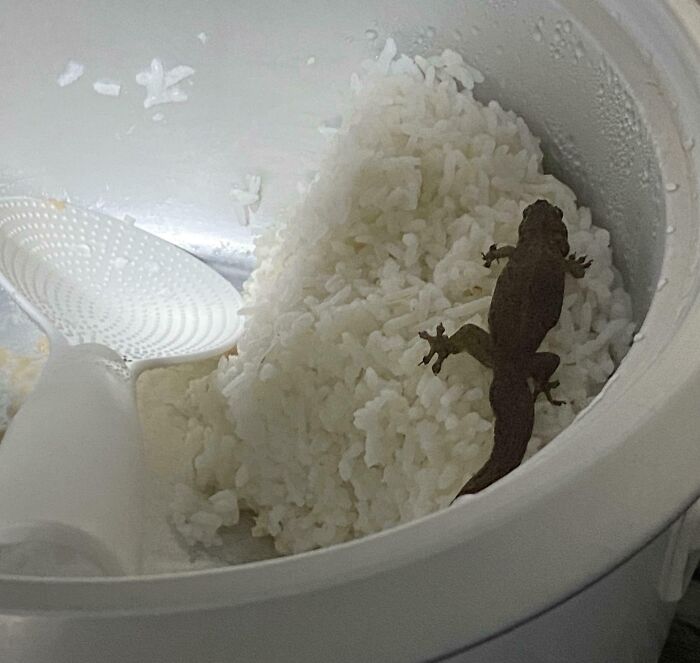
Advertisement – Continue Reading Below
Sorry in advance, Pandas—this list is not exactly appetizing. Some of these food pics will turn your stomach. But the truth is, the issue of foreign objects in food is actually really serious.
Let’s be real—nobody wants to find a fingernail, a strand of hair, or a random piece of plastic in their dinner. But how does stuff like this even happen? And what can you actually do if it happens to you?
If this list has you stressing about biting into a fast-food burger and finding something nasty—don’t panic just yet. According to food safety research, around 1 in 10 food recalls over the past 20 years were because of foreign objects. And most of the time, it wasn’t bugs or metal—it was tiny plastic fragments. Gross, yeah. But still not the absolute worst-case scenario.
Advertisement – Continue Reading Below
That said, these cases really highlight why restaurant hygiene, clean food prep, and proper quality control matter so much. Knowing what to watch for—and how to report food safety violations—can save you (and a lot of other people) from more than just a ruined meal.
#4 Found A Nose Ring In My Taco Bell Today!
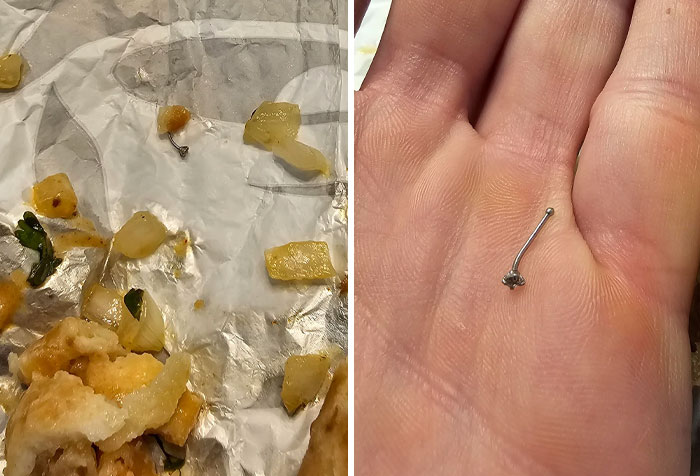
Advertisement – Continue Reading Below
#5 This Bee Was In A Vanilla Wafer, I Was Serving Food For Daycare Kids
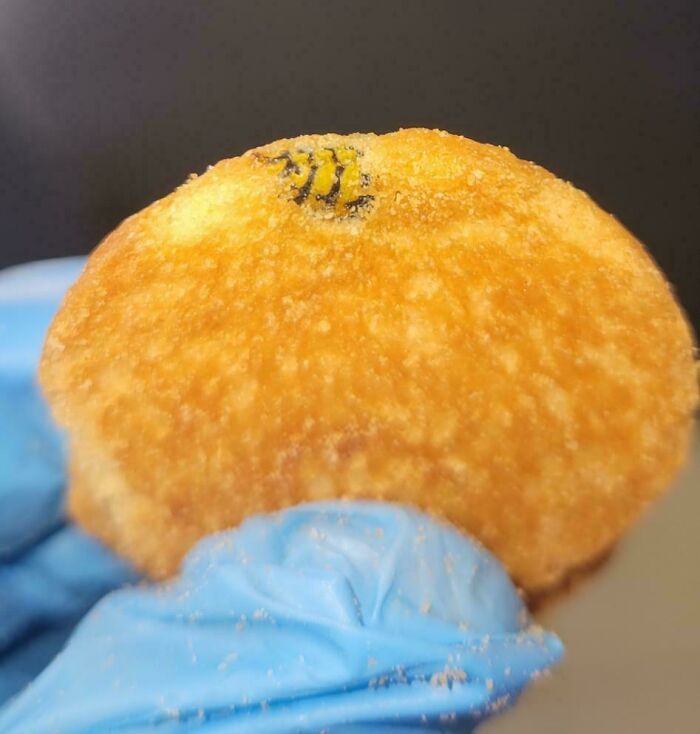
Advertisement – Continue Reading Below
#6 Lost My Appetite

Advertisement – Continue Reading Below
On a more serious note—The Washington Post recently reported a big rise in cases of foreign objects in food in 2025. Major brands like Chef’s Line and Nestlé even had to issue food recalls after customers found metal bolts and wood-like materials in packaged meals.
And while biting into a screw or a piece of plastic is bad enough, the scarier danger is the stuff you can’t see—food contamination. Unlike a chunk of metal, pathogens like Listeria or E. coli are invisible but way more dangerous.
Just last year, a deadly Listeria outbreak was linked to Boar’s Head deli meats. There were also E. coli outbreaks traced back to onions used by McDonald’s, and even cucumbers were suspected of spreading Salmonella.
All of this shows why food safety, proper handling, and quick food recalls are so important. Whether it’s a visible contaminant or a hidden bacteria, knowing how your food is prepared—and where it comes from—can literally protect your health.
#7 Disgusting
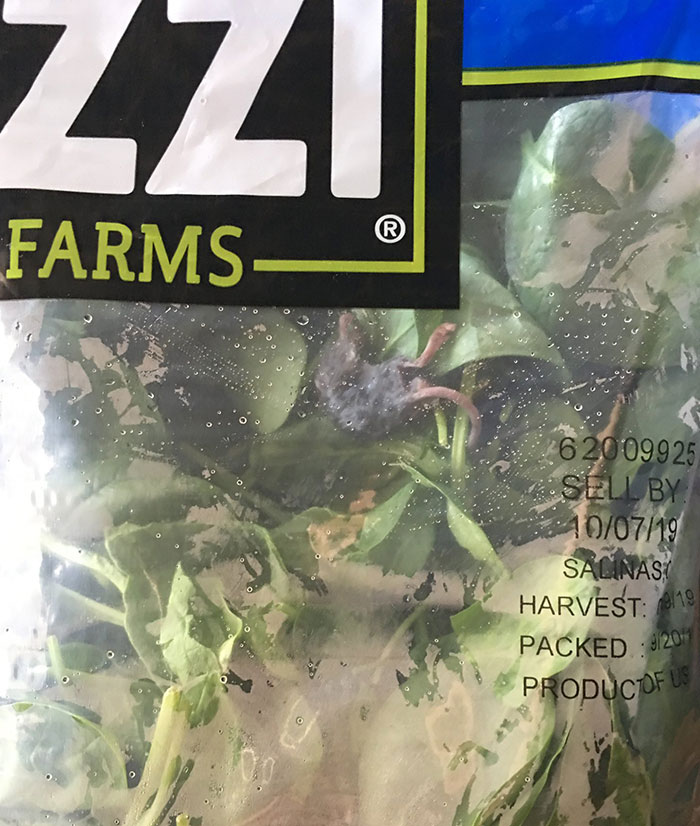
Advertisement – Continue Reading Below
#8 Razor Blade Found In Food At Empire Halal Kabab & Grill
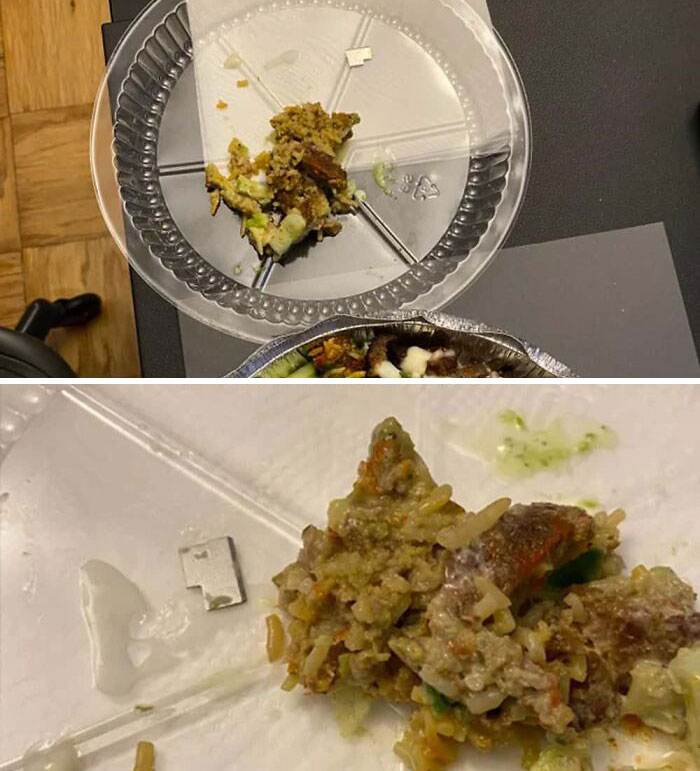
Advertisement – Continue Reading Below
#9 Bit Into An Earring Back
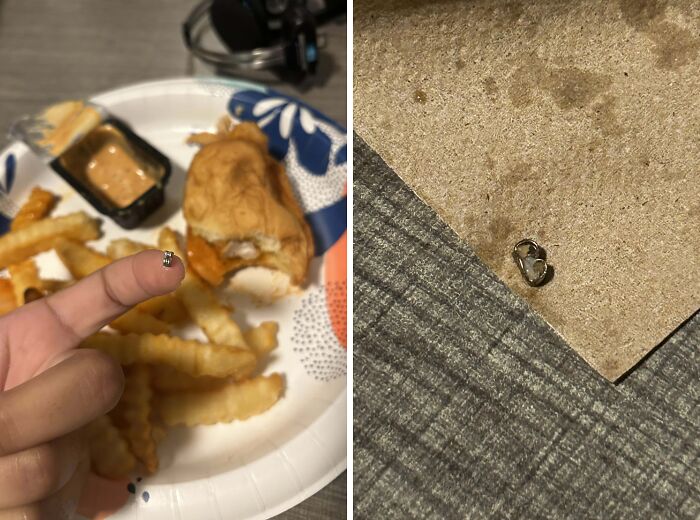
Advertisement – Continue Reading Below
It’s really no surprise that a lot of people don’t feel confident about how safe their food actually is anymore. A recent Gallup poll showed that trust in the federal government to keep the food supply safe is now at its lowest level since 1999.
And it’s not just government agencies people are side-eyeing. Even grocery stores aren’t getting full trust. Only 74% of people said they believe the food sold in supermarkets is safe to eat. That means more than 1 in 4 shoppers are unsure about what they’re actually putting in their carts.
With constant food recalls, contamination reports, and foreign objects in packaged foods, it’s easy to see why public trust is dropping. These numbers make it super clear—there’s a growing need for stronger food safety regulations, quality control, and transparency across the whole food industry.
Advertisement – Continue Reading Below
#10 Moldy Pasta From Pizza Hut
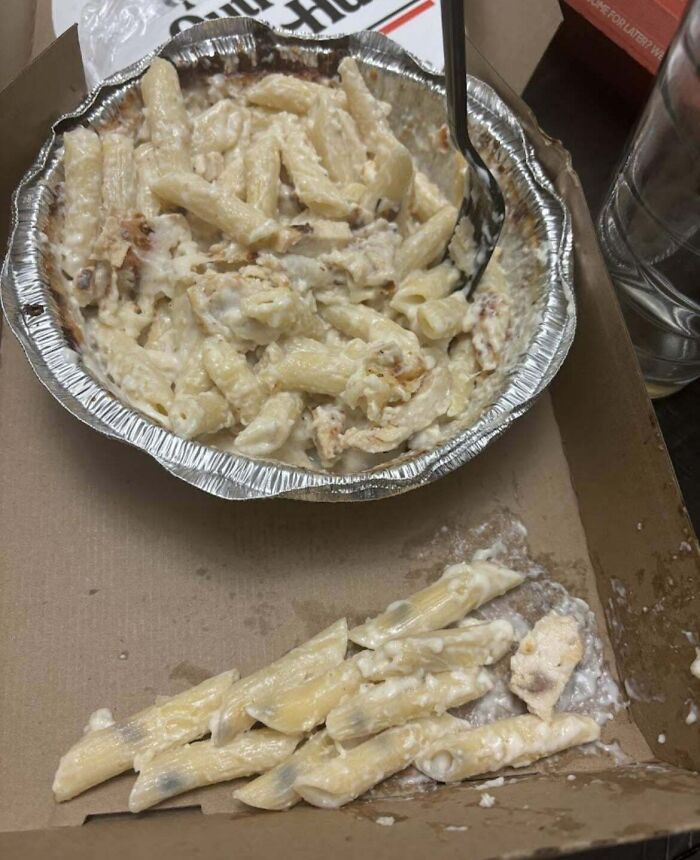
Advertisement – Continue Reading Below
#11 Found A Dead Caterpillar In My Sealed Grocery Store Salad
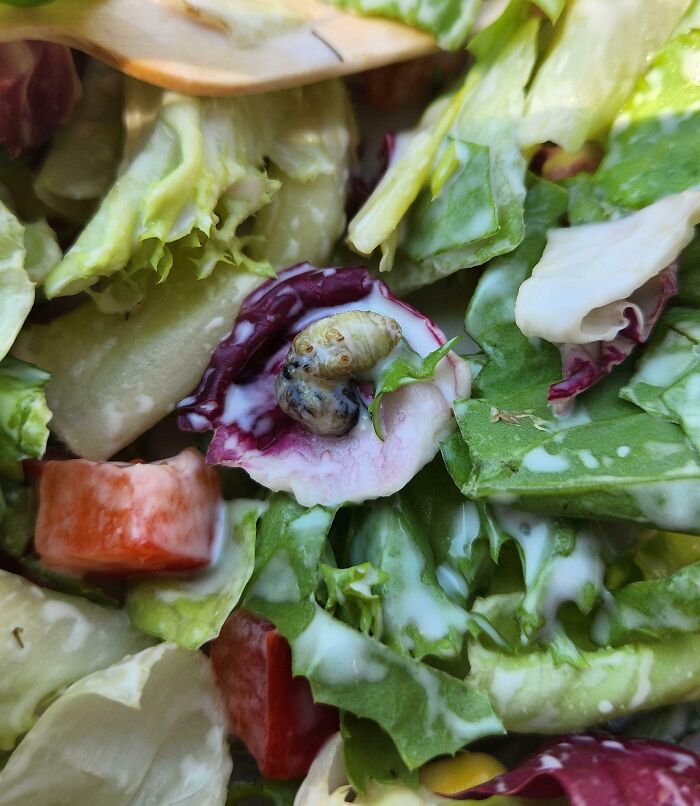
Advertisement – Continue Reading Below
#12 I See Your School Food And Raise You Us Navy Food!
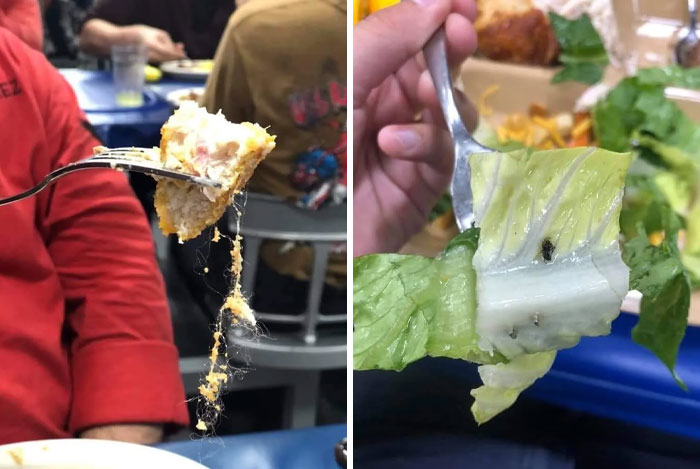
Advertisement – Continue Reading Below
These days, people are paying way more attention to what they eat—and that’s also fueling the growing distrust in food safety systems. Right now, at least 50% of Americans say they’re trying to eat healthier, which means they’re caring more about the quality, sourcing, and safety of their meals than ever before.
This rise in health-conscious eating has made food safety awareness part of daily life. Shoppers are asking tough questions now: Where is this food from? Was it handled safely? What ingredients are actually in it?
Amanda Deering, an associate professor of food science at Purdue University, says this shift is real. “Ten years ago it was different. People weren’t so focused on that information. But now, they actively go looking for it,” she explained, pointing out how customers want clear details about food origin, handling, and safety labels.
This new level of awareness shows people want more control over their health and nutrition choices. And that means food brands, grocery stores, and government agencies need to step up—being more transparent, more trustworthy, and more serious about food safety regulations and quality control than ever before.
#13 Found Inside My Taco Bell Meal. I Feel Sick

Advertisement – Continue Reading Below
#14 Was Opening A Fresh Loaf Of Bread
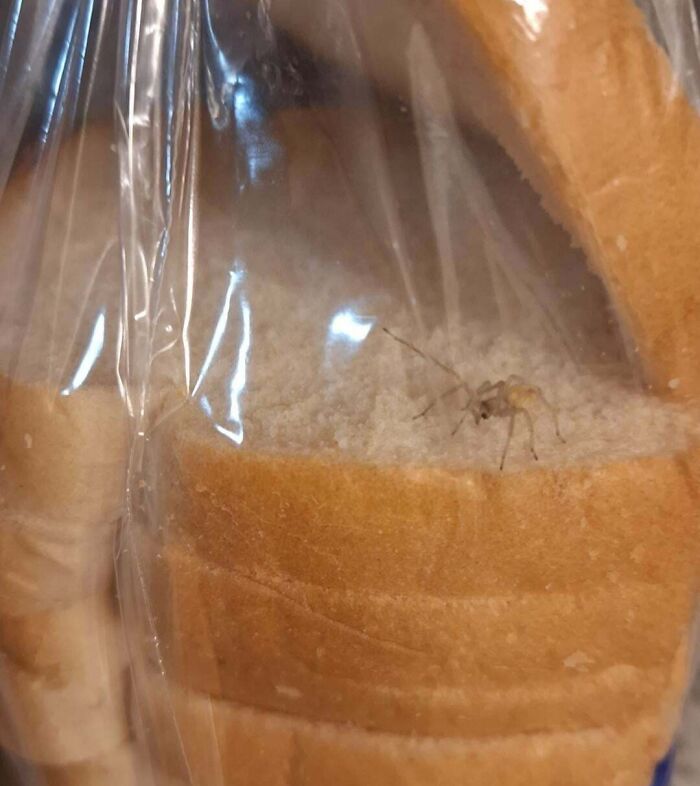
Advertisement – Continue Reading Below
#15 Ordered Indian Takeout And Found A Baggy In My Curry
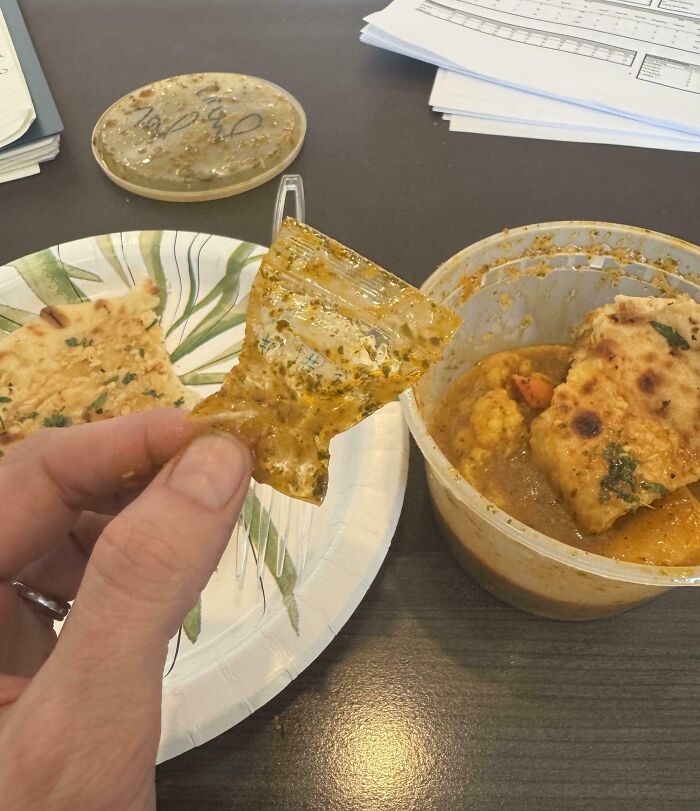
Advertisement – Continue Reading Below
So, how do you actually protect yourself from harmful bacteria and pathogens in food?
For stuff we cook—like meat, poultry, and even some veggies—the heat usually does the job. Hitting the proper cooking temperatures kills off most dangerous microorganisms.
The real risk comes with fresh fruits and raw vegetables. Since they’re not cooked, the only defense is how well you clean them.
Running produce under clean, running water is the first step. But don’t just rinse—gently rub the fruits and veggies with your hands to get rid of dirt, bacteria, and any pesticides on the surface. A little pressure helps loosen anything stuck.
Advertisement – Continue Reading Below
Once you’ve rinsed, dry them with a clean paper towel or cloth. That extra step actually removes more bacteria than water alone, lowering your risk even further.
These simple food safety tips for home kitchens can make a huge difference in preventing foodborne illness—especially when it comes to eating raw, fresh foods.
#16 Thai Man Discovers Venomous Snake Frozen Inside Ice Cream
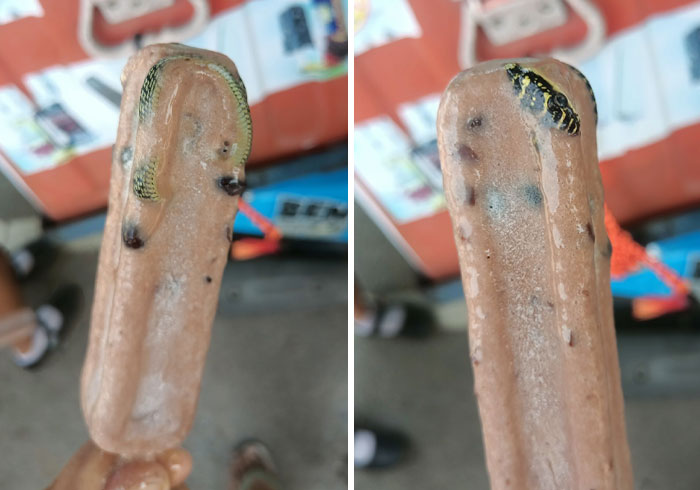
Advertisement – Continue Reading Below
#17 I Found Blue Plastic In My High End Brand Deli Meat
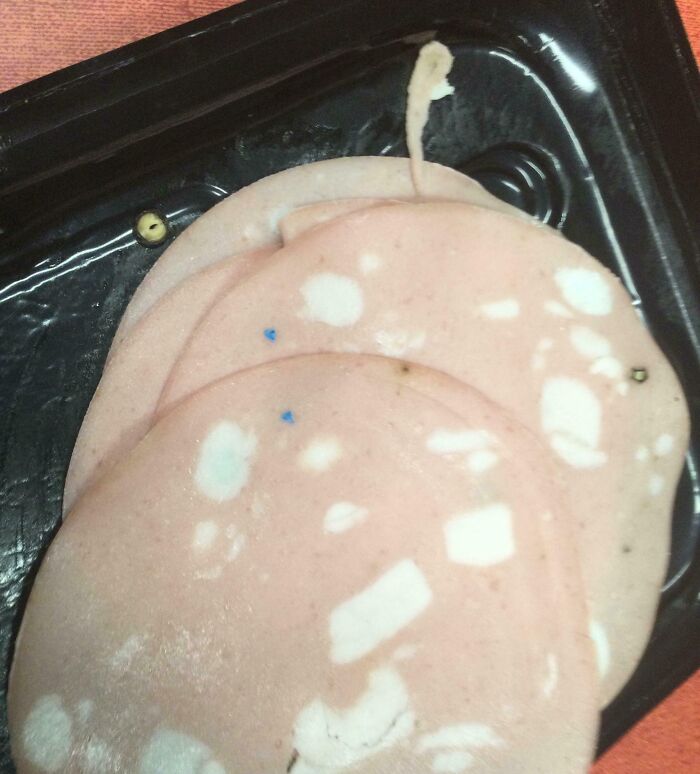
Advertisement – Continue Reading Below
#18 I Found Blue Plastic In My High End Brand Deli Meat
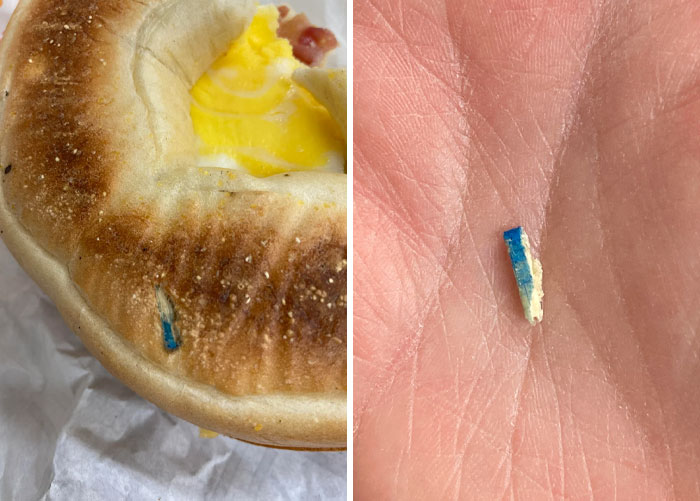
Advertisement – Continue Reading Below
Some people like to go the extra mile when cleaning produce—using vinegar, baking soda, or even lemon solutions to wash fruits and veggies. These natural produce cleaners are super popular, but food safety experts say they’re not really needed.
Food scientist Linda Harris told NPR that these solutions don’t actually work better than plain water. In fact, she says soaking fruits and vegetables in a bowl of water is a bad idea. Why? Because if just one apple, tomato, or cucumber has harmful bacteria like E. coli or listeria, it can spread through the water and contaminate everything else in the bowl.
Her simple recommendation: rinse produce under clean running water and gently rub the surface with your hands. No fancy sprays or solutions required. This helps prevent cross-contamination and keeps your food safe—especially when you’re cleaning fresh fruits and raw vegetables you plan to eat right away.
#19 I Ordered Some Food For Delivery Today (In Sf) And There’s A Massive Metal Handle In My Food. Got A Partial Refund From Doordash

Advertisement – Continue Reading Below
#20 This Rotisserie Chicken My Sister Bought Came With The Rod Still Attached
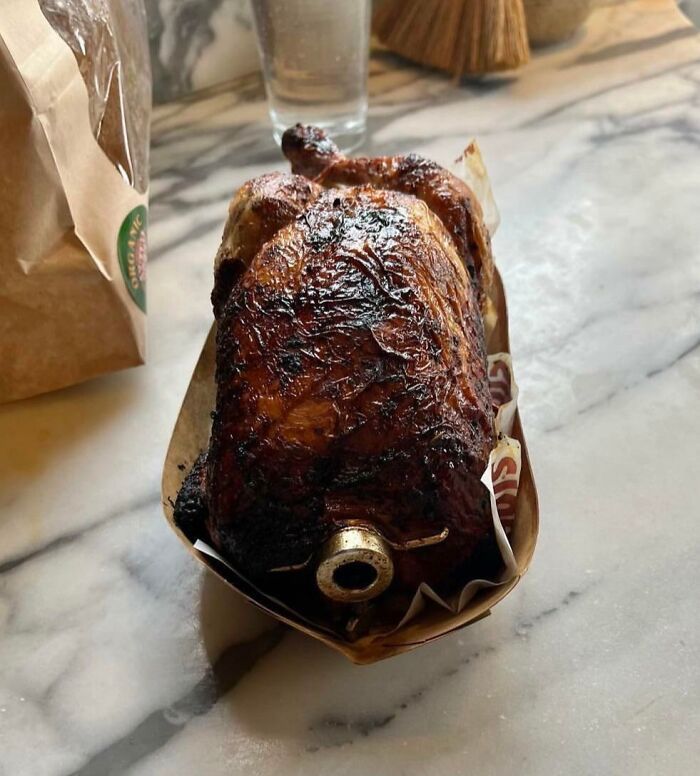
Advertisement – Continue Reading Below
#21 Chipped Tooth From Screw In Pizza
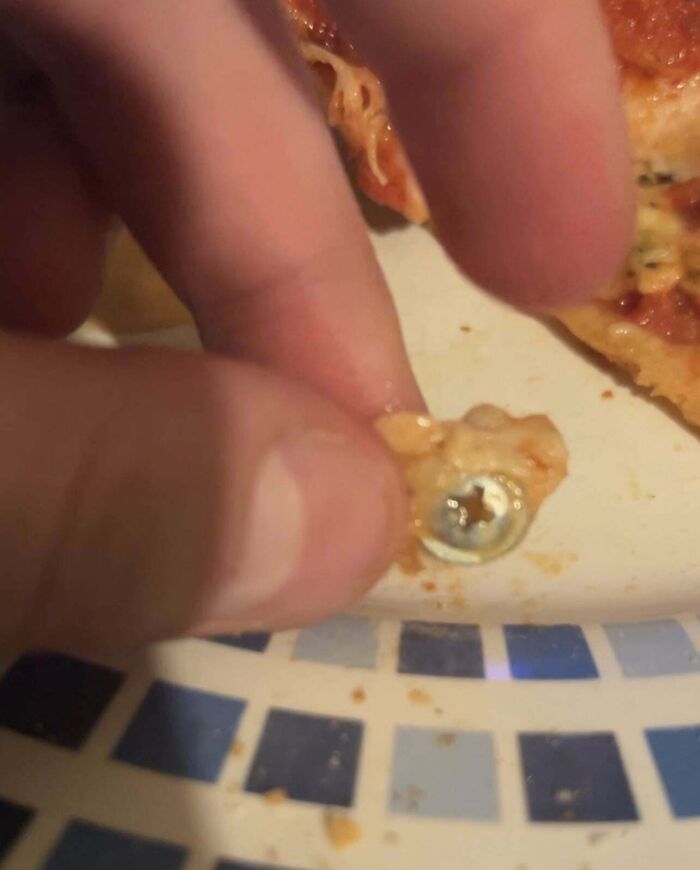
Advertisement – Continue Reading Below
#22 On Valentine’s Night, During Dinner, Guess What I Bit Down On!
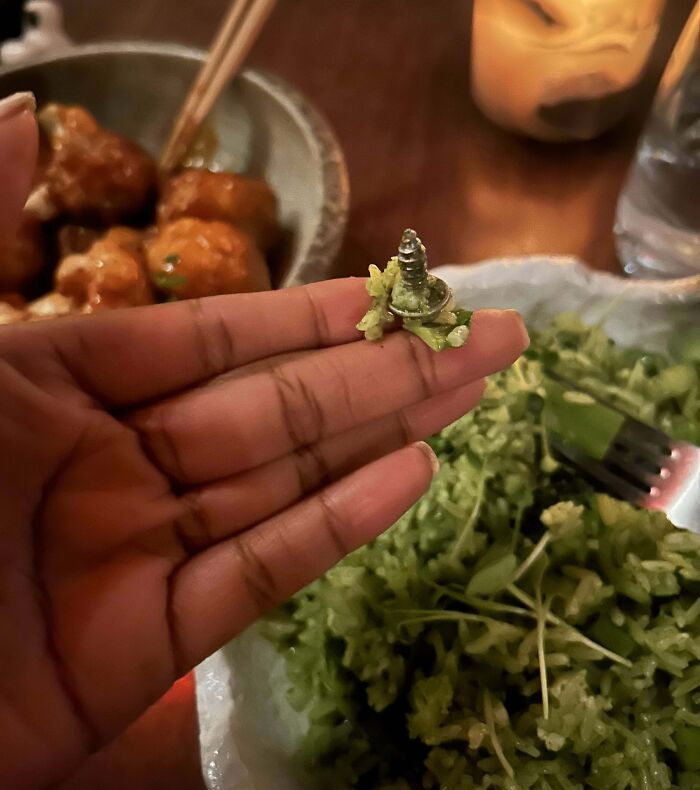
Advertisement – Continue Reading Below
When it comes to food safety, one of the biggest worries for manufacturers is finding metal fragments in fresh produce or packaged foods. These kinds of foreign objects are dangerous for consumers—and a nightmare for companies. One serious case can lead to food contamination lawsuits, expensive food recalls, and major damage to a brand’s reputation.
To prevent that, many manufacturers now rely on X-ray food inspection systems. These machines can spot tiny pieces of metal in food that don’t belong there, helping keep products safer before they ever hit store shelves.
But here’s the catch—X-rays don’t catch everything. Things like plastic, rubber, wood splinters, or broken pieces of gloves and tools can still slip through. That’s why food companies also use metal detectors, optical sorters, and strict hygiene protocols to keep the supply chain safe.
Advertisement – Continue Reading Below
At the end of the day, keeping food free from foreign materials isn’t just about safety—it’s about quality control in food processing, protecting the brand, and most importantly, protecting the customer.
#23 A Side That Wasn’t Expected
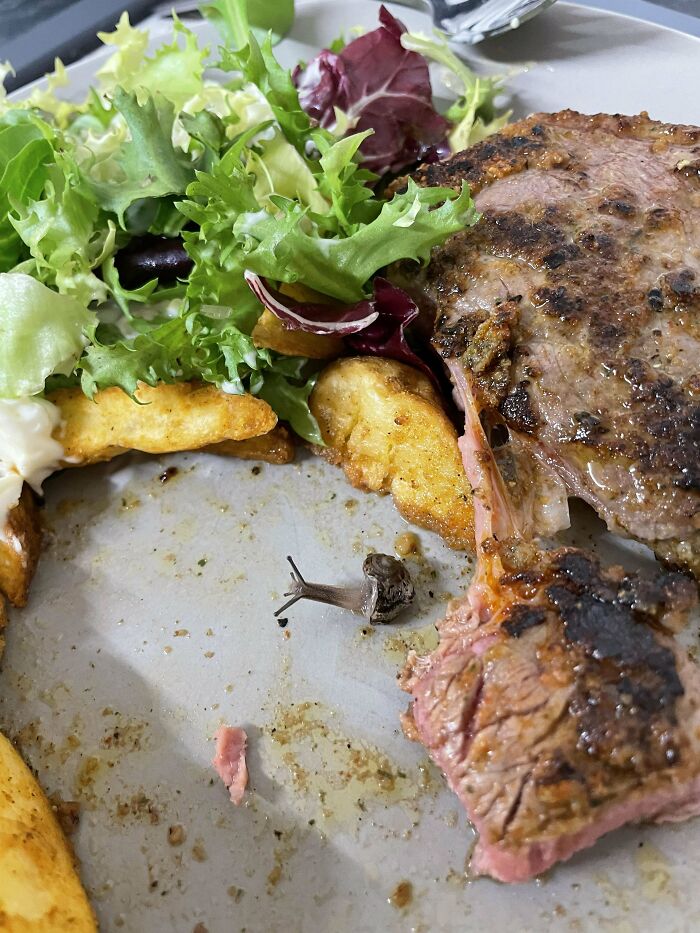
Advertisement – Continue Reading Below
#24 My Wife’s Salad At Texas Road House Last Night
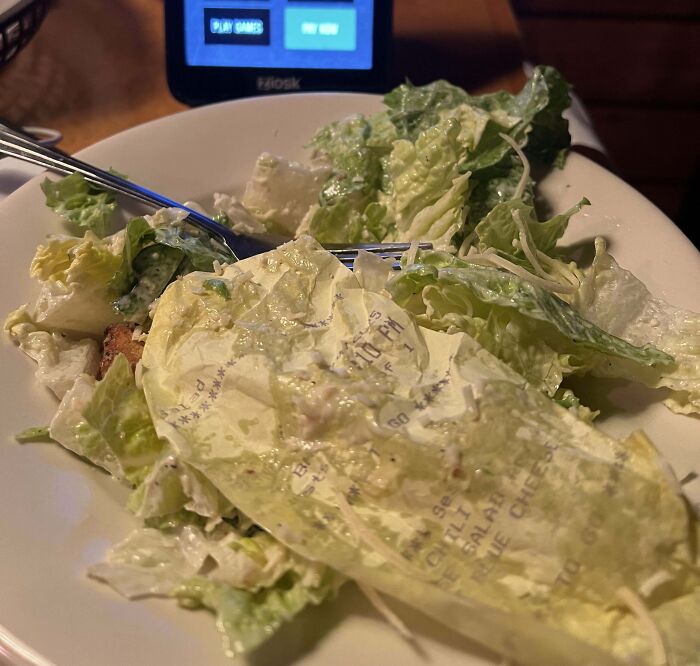
Advertisement – Continue Reading Below
#25 Had A Roach Baked On My Pizza

Advertisement – Continue Reading Below
Sometimes little insects, larvae, or tiny pests end up in our fruits and vegetables. Sounds gross, right? But here’s the thing—the U.S. Food and Drug Administration (FDA) actually expects a small amount of these “extra ingredients” in food. According to the FDA Food Defect Levels Handbook, it’s nearly impossible (and insanely expensive) to grow and process food that’s 100% free of natural defects.
The FDA says it’s just not practical to remove every single bug, speck of dirt, or bit of debris during farming, harvesting, and packaging. That’s why they set strict FDA food safety guidelines to keep these natural defects within safe limits.
These rules exist to protect consumers while also keeping food production costs under control. Without them, your grocery bill would be even higher. So while the idea of a fruit fly in your spinach isn’t appetizing, it’s still considered safe under FDA food safety standards.
#26 A Small Spider Appeared In My Cereal

Advertisement – Continue Reading Below
#27 There’s A Dead Moth In My Cadbury’s Chocolate
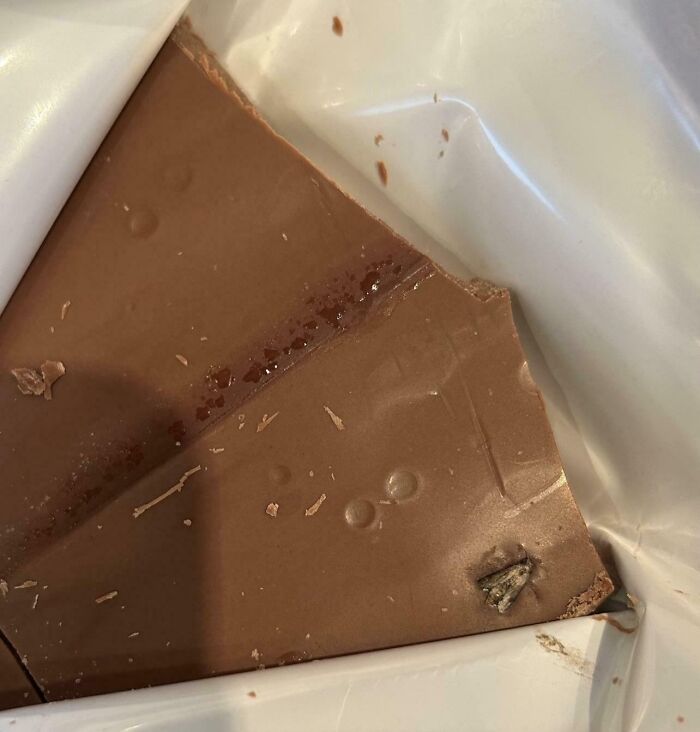
Advertisement – Continue Reading Below
#28 I Ordered A Cheddar Mcmelt Without Onions. It Came Not Only With Onions, But With Whatever Rubber Thing This Is In It

Advertisement – Continue Reading Below
What should you do if you find something like a latex glove in your burger? Experts say the best thing to do is preserve the evidence right away. This is very important if you’re planning to file a food safety complaint or even take legal action for food contamination.
Here’s what to do:
- Place the food and the foreign object in a clean, sealed container.
- Put the container in the freezer to keep it safe from spoiling.
- Save the original food packaging and purchase receipt.
- Take clear photos of the food, the foreign object, and any packaging.
Keeping strong evidence can help you when contacting the restaurant, food manufacturer, or even if you need to speak with a food safety lawyer. This also helps consumer protection agencies take proper action to prevent the same thing from happening to others.
#29 Thanks For The Sticker On The Tomato In My Sandwich
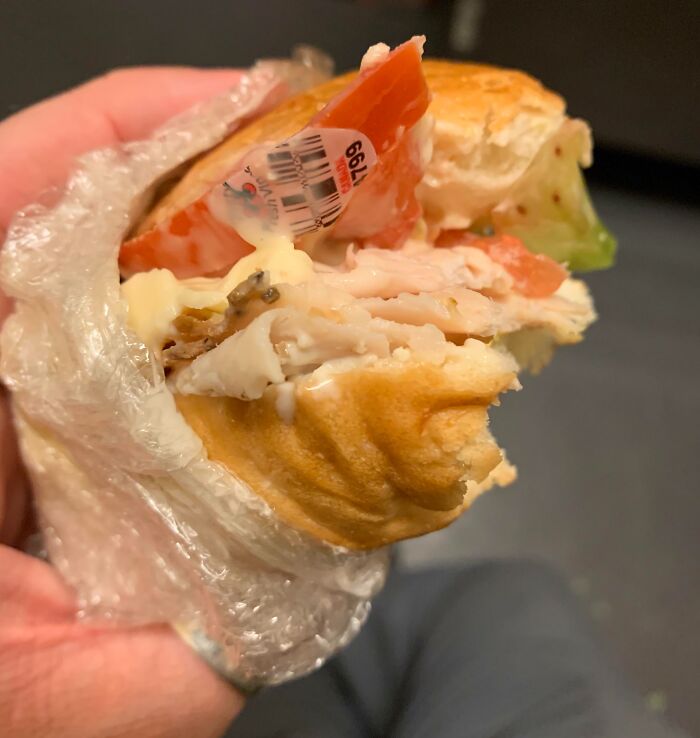
Advertisement – Continue Reading Below
Advertisement – Continue Reading Below

